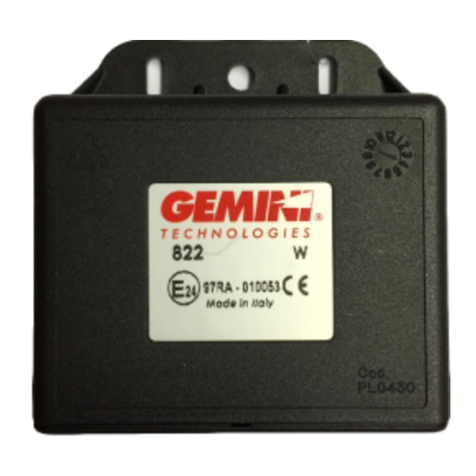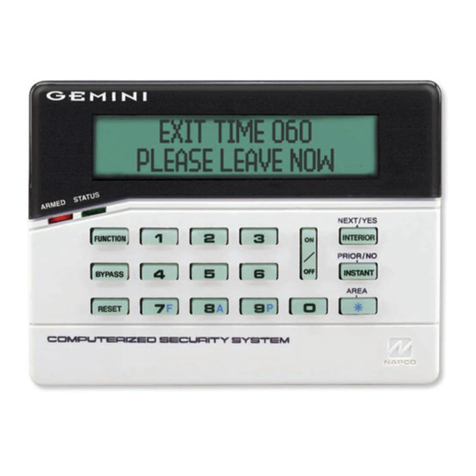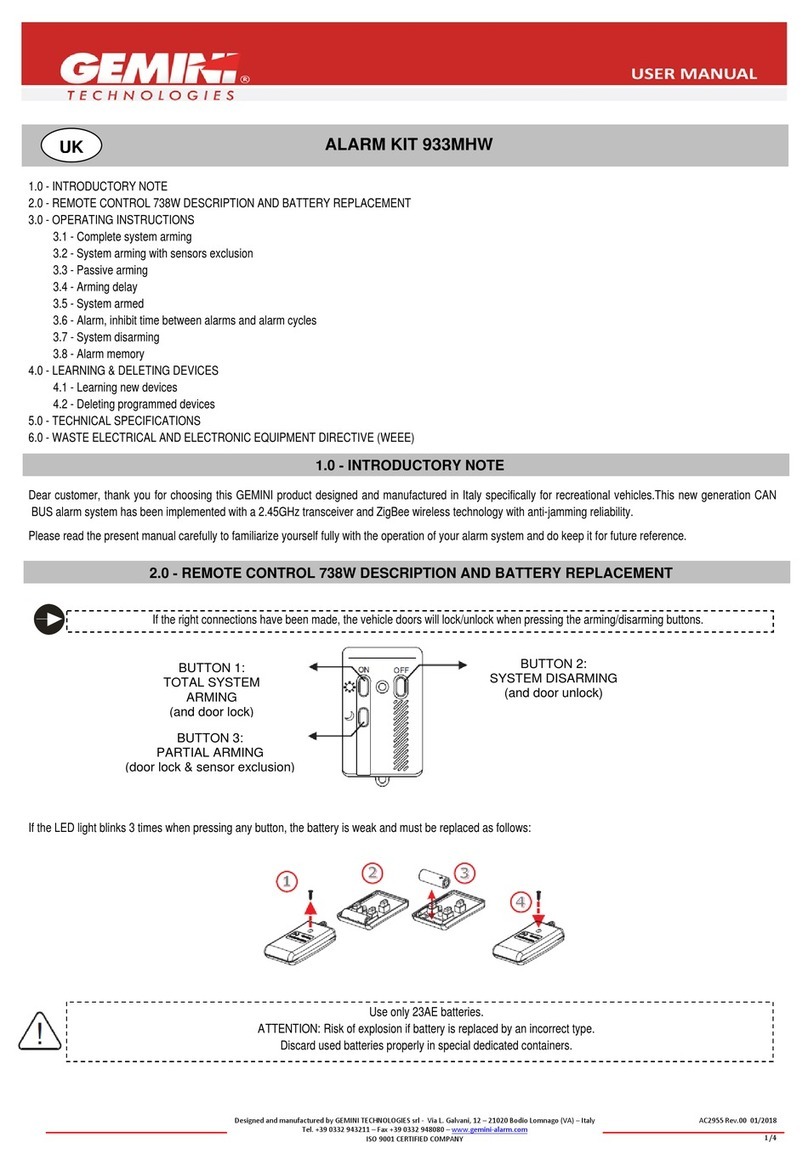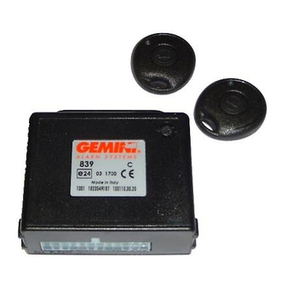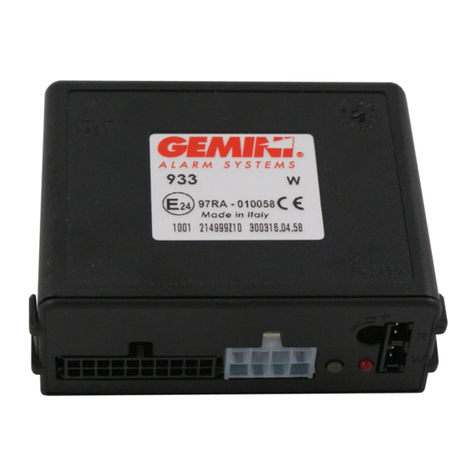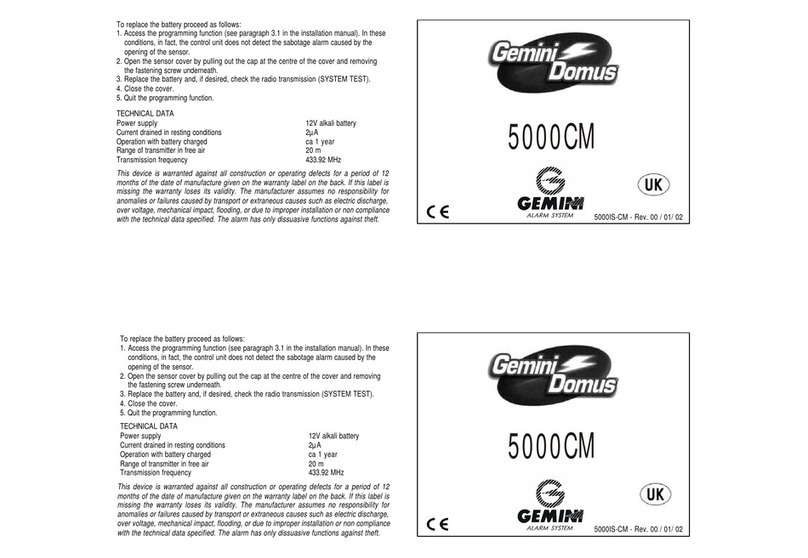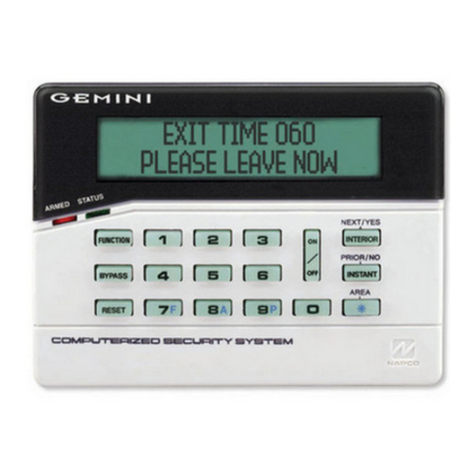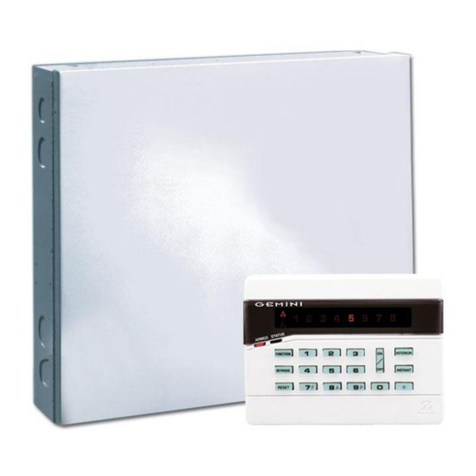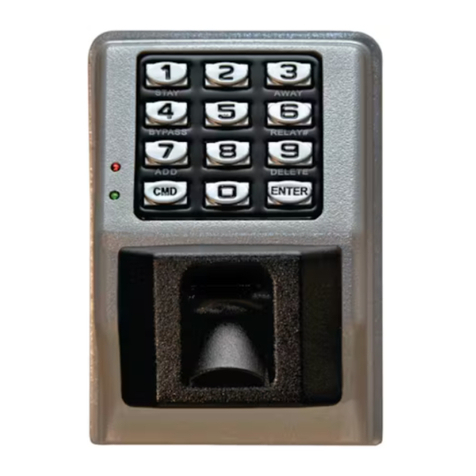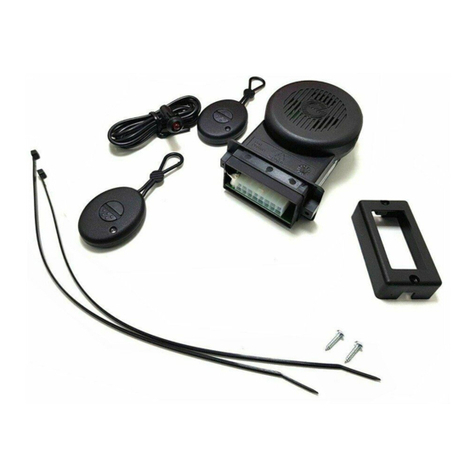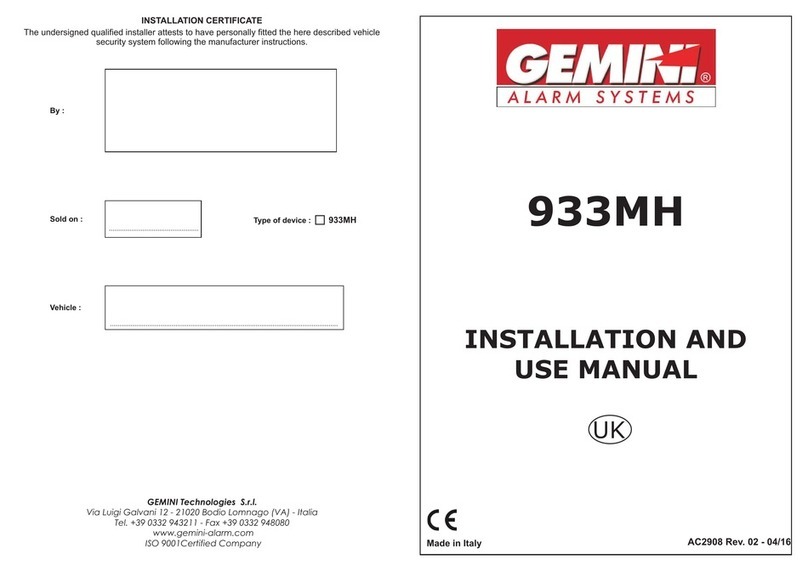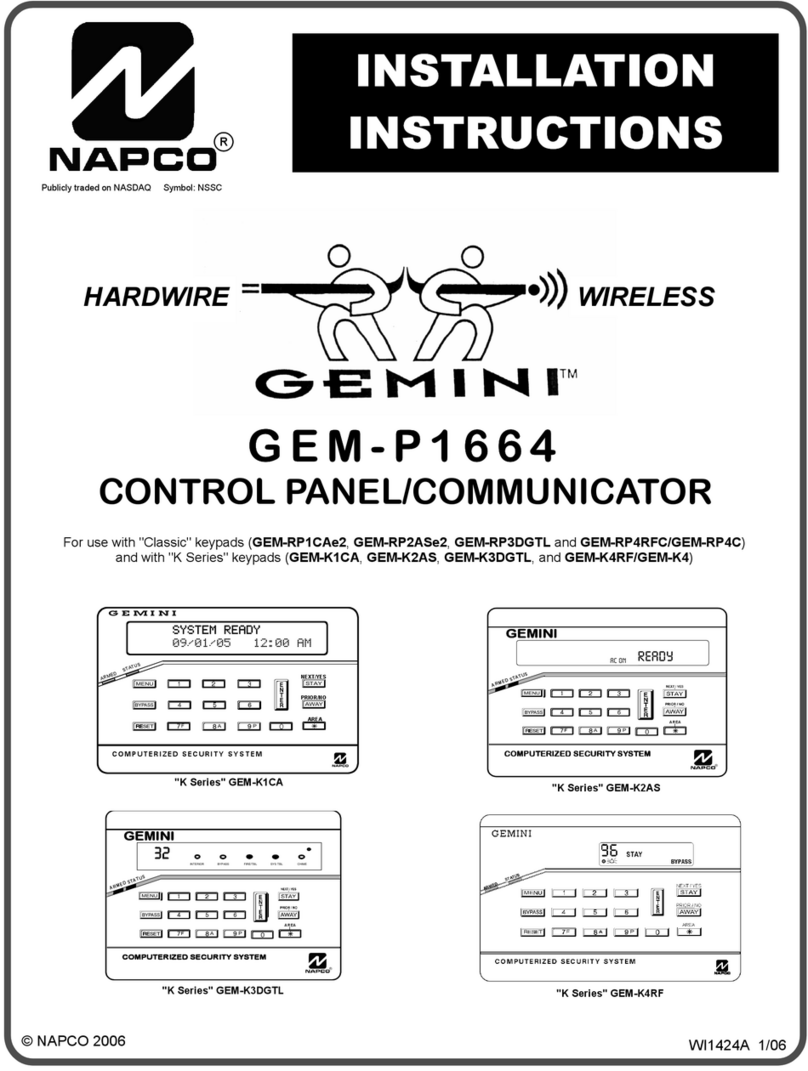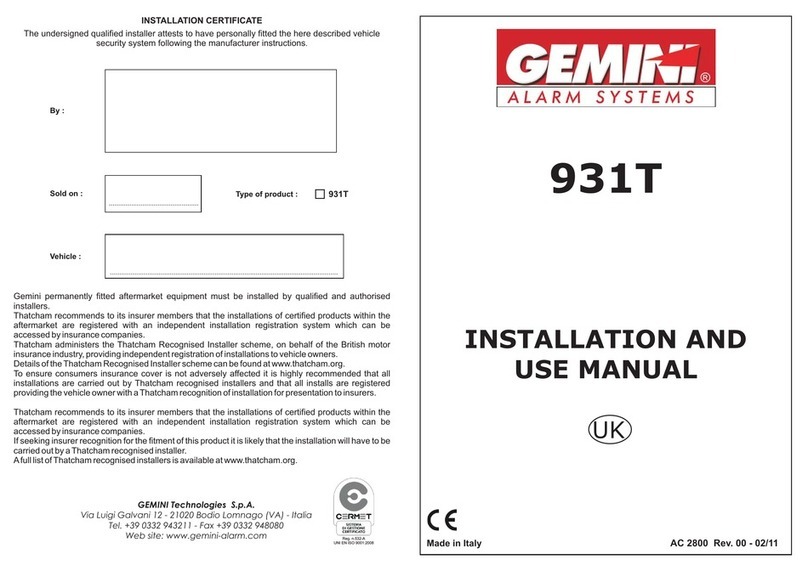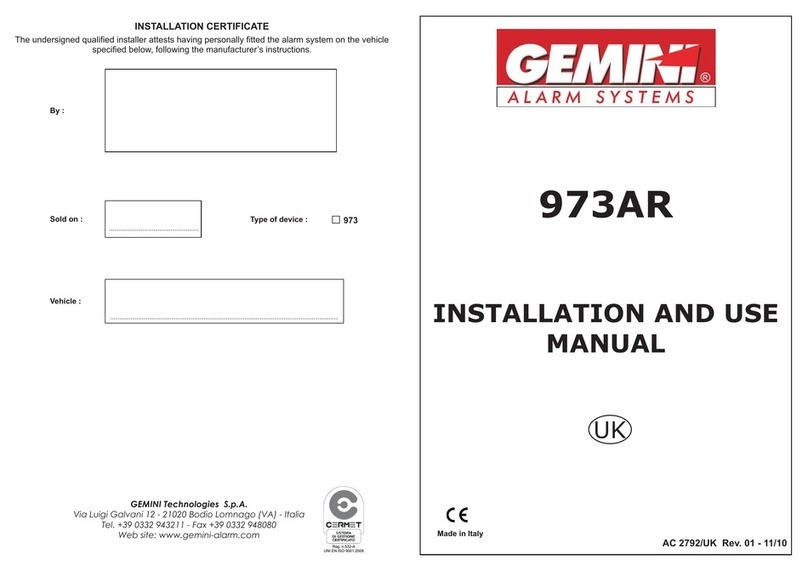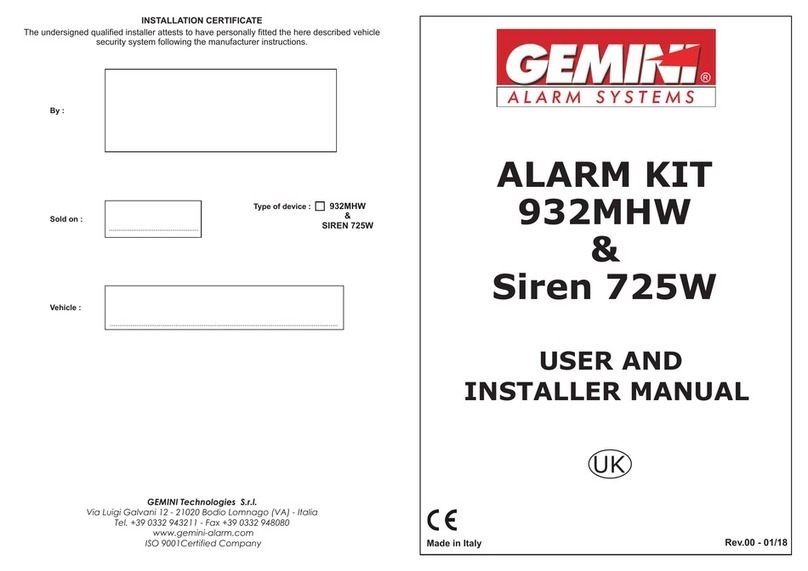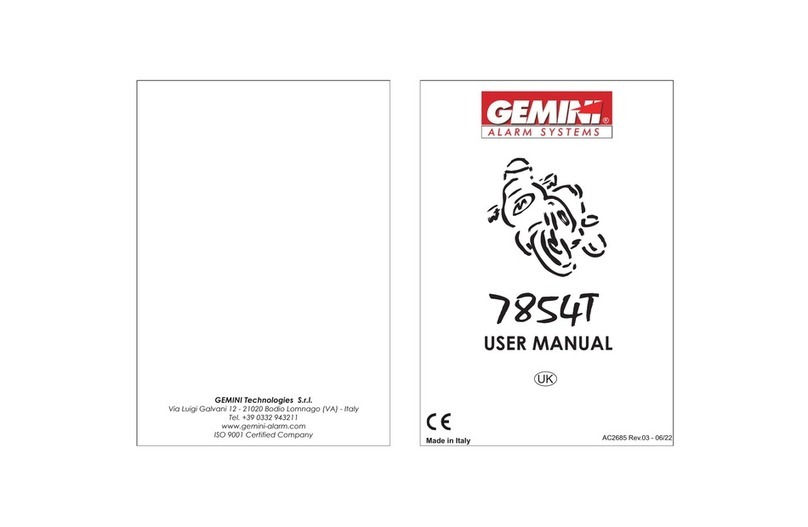
XGEM-P9600 Installation Instructions LNAPCO Security Systems
WI742D 5/03
!Page 8
OPTIONAL ACCESSORIES AND
PERIPHERALS
EOL130: 2-Wire Fire Zone Resistor, 130W, 3W
EOL2.2K: End-of-Line Resistor Assy., 2.2K for Fire Circuit
FT2200: End-of-Line Relay/Resistor Supervisory Module
GEM-DT: Wireless Dual-Technology Sensor **
GEM-EVA 1: Electronic Voice Annunciator *
GEM-EZM4: 4-Zone Expansion Zone Module
GEM-EZM8: 8-Zone Expansion Zone Module **
GEM-GB: Wireless Glass-Break Detector **
GEM-KEYF: Key Fob Transmitter **
GEM-HEAT: Wireless Heat Detector **
GEM-PIR: Wireless PIR **
GEM-PIRPET: Wireless Pet Immune Transmitter *
GEM-PRINT: Parallel Printer Interface *
GEM-RECV8: Wireless Receiver, 8 Zones **
GEM-RECV16: Wireless Receiver, 16 Zones **
GEM-RECV96: Wireless Receiver, 96 Zones **
GEM-RS232KIT: Home Automation Interface *
GEM-SMK: Wireless Smoke Detector **
GEM-TRANS2: Window/Door Transmitter, 2-Point **
GEM-RTRANS: Recessed Window/Door Transmitter
GEM-WP: Waterproof Panic Transmitter **
GEM-X10KIT: X-10 Interface *
GEM-OUT8: 8 output active low output module
H1217: Mercantile Conversion Kit
M278: Line-Reversal Module *
PCD3000: Downloading Software (for DOS) for IBM PC-
Compatible*
PCD-Windows: Downloading Software (for Windows) for IBM
PC-Compatible*
PCI2000/3000: Software with Interface for IBM PC-Compatible
Computer
PCI-MINI: Notebook Computer Interface *
PS3002: Power-Supply Module, 13.2Vdc, 1.9A
RB1000: Relay Board, single output *
RBAT4: Rechargeable Battery, 12VDC, 4AH
RBAT6: Rechargeable Battery, 12VDC, 6AH
RBAT7: Rechargeable Battery, 12 VDC, 7AH
RBATH1: Dual Battery Harness *
RM3008: Relay Module (in enclosure)
RPB-3: Universal Keypad Mounting Box
TRF11: Transformer, 16Vac/40VA, Class 2
TRF14: Transformer, 16Vac/50VA, Class 2
WIZARD IIe: Telephone Interface Module *
WL1: Wire Assembly with Lug Connector, 20”
VERI-PHONE: Two-Way Voice/Listen-In Module *
W834-1: Keypad Cable, plug-in (20”)
OI163: Instruction Manual, GEM-P9600
OI193: User Guide, GEM-RP1CAe2
OI192: User Guide, GEM-RP2ASe2
OI249: User Guide, GEM-RP3DGTL
OI278: User Guide, GEM-RP4C & RP4RFC
WI1212: Installation Manual, GEM-RP4C
WI1128: Installation Manual, GEM-RP4RFC
OI279: User Guide, GEM-K1CA
OI280: User Guide, GEM-K2AS
OI281: User Guide, GEM-K3DGTL
OI283: User Guide, GEM-K4 & K4RF
WI1178: Installation Manual, GEM-K4
WI1179: Installation Manual, GEM-K4RF
WI777: GEM-P9600 Programming Manual
WI1185: GEM-P9600 Programming Manual
* Not investigated by UL.
** Not investigated by UL for commercial applications.
UL LISTINGS
Household Burglar Alarm System Units: UL1023
Household Fire Warning System Units: UL985
Local Burglar Alarm Units and Systems: UL609
Central Station Burglar Alarm Units: UL1610
Police Station Alarm Units: UL365
Security Industry Association (SIA) False Alarm Reduction
Standard CP-01
COMPATIBLE UL-LISTED DEVICES
Refer to the following list of recommended devices.
Bells:
Ademco AD8-12; AD10-12
Amseco MBL-8/12V; MBL-10/12V
Wheelock 46T-G4-12-R*; 46T-G6-12-R; 46T-G10-12-R
Hochiki America AL-VB-1012*; AL-MB-612*
*Not for Household Fire applications (<85dB at 10')
Grade-A Bell:
Ademco AB-12 Bell in Box
Horns:
Wheelock 34T-12-R; MT-12/24; MT4-12/24; MIZ-12
Faraday 6120-0-0-12-DC*
Federal Signal 450E-24
Hochiki America AL-FH-12M*
*Not for Household Fire applications (<85dB at 10')
Mini-Horn:
Federal Signal 460-024-R (red); -W (white); -BG (beige)
Chimes:
Wheelock CH-CF1-12; CH-DF1-12 (both for private-mode sig-
nalling only)
Strobes:
System Sensor SS1215ADA; SS1215ADAB
Wheelock LS12
Strobe/Horns:
Wheelock 7002T-12-W-FR; 7001T-12-W-FR; V7001T-12-W-FR
Gentex SHG-12H
System Sensor MASS1215ADA; MASS1215ADAB
Electronic Signals:
Wheelock ES-BH2-R; ES-DL2-R; ES-EL2-R
Electronic Signal/Strobes:
Wheelock ES-BH2-WH-12DC-HF-R; ES-DL2-WS-12DC-VF-R;
ES-EL2-WS-12DC-HF-R
Bell/Strobes:
Wheelock 46T-G6-12-WS-12-HF-R; 46T-G10-12-WS-12-HF-R
Transformers:
Basler Electric BE116240CAA 40VA; BE116250CAA 50 VA
